Embarking on the Army Combat Fitness Test (ACFT) journey, soldiers recognize the paramount importance of the 2-mile Run, a challenging evaluation of cardiovascular endurance. In this article, we delve into the intricacies of the ACFT Run Standards, shedding light on the regulations, scoring benchmarks, and the significance of mastering this event.
As a pivotal component of the Army’s holistic fitness assessment, the 2-mile Run demands more than just speed; it requires strategic pacing, mental resilience, and a commitment to achieving peak physical readiness. Join us as we navigate the nuances of the ACFT Run Standards, empowering soldiers to excel in this rigorous test.
What Is ACFT 2-Mile Run (2MR) Event?
[tds_note]The Army Combat Fitness Test (ACFT) is a comprehensive assessment designed to measure soldiers’ physical readiness across a range of key fitness domains [1]. One integral component of the ACFT is the 2-Mile Run (2MR) event, a challenging test of cardiovascular endurance and overall stamina. This event aims to evaluate a soldier’s ability to sustain a moderate to high level of intensity over an extended period, reflecting the demands of real-world military tasks.[/tds_note]

The 2-Mile Run is a significant departure from the previous Army Physical Fitness Test (APFT), which featured a 2-Mile run as well. However, the ACFT version of the 2MR places a greater emphasis on overall fitness and includes more comprehensive metrics. The test is part of the Army’s commitment to ensuring soldiers are physically prepared for the demands of modern warfare, which often require sustained, aerobic endurance.
Soldiers participating in the 2-mile Run start the event on a track or a measured course, and they are required to complete the distance in the shortest time possible. The run is a timed event, and soldiers must push themselves to achieve their best performance. Unlike the APFT, where the run was the sole measure of aerobic fitness, the ACFT incorporates additional exercises to provide a more holistic assessment.
The 2-Mile Run is not just a standalone test of endurance; it is one component of a six-event series in the ACFT [2]. The other events include the three-repetition maximum deadlift, standing power throw, hand-release push-ups, sprint-drag-carry, and the leg tuck. Collectively, these events evaluate different aspects of physical fitness, such as muscular strength, power, agility, and coordination.
The inclusion of the 2-Mile Run in the ACFT underscores the Army’s commitment to developing well-rounded and resilient soldiers. This event challenges soldiers to maintain a steady pace over an extended distance, simulating the physical demands they may face during missions. It also encourages soldiers to incorporate aerobic training into their overall fitness routines, promoting a healthy and sustainable approach to physical readiness.
ACFT 2-Mile Run Standards In 2024:
As of January 2024, the ACFT 2-mile run standards were tiered according to three categories — Gold, Gray, and Black — based on the different physical demands of a variety of Army Occupational Specialties (MOS). However, these standards are subject to change, so it’s important to verify the most current information [3].
ACFT 2-Mile Run Standards For Men (2024):
1) Gold Standard (Most physically demanding MOS):
- The time to aim for could be approximately 13:30 or faster;
2) Gray Standard (Moderately physically demanding MOS):
- A good time might be around 15:00 or faster;
3) Black Standard (Less physically demanding MOS):
- A benchmark time could be closer to 18:00 or faster;
ACFT 2-Mile Run Standards For Women (2024):
1) Gold Standard (Most physically demanding MOS):
- The target time might be set at approximately 15:30 or faster;
2) Gray Standard (Moderately physically demanding MOS):
- A solid time could be around 17:00 or faster;
3) Black Standard (Less physically demanding MOS):
- An acceptable time might be close to 21:00 or faster [4];
For both men and women, the times required often decrease for older age groups. Since the U.S. Army occasionally updates its physical fitness requirements and standards to better meet the needs of its operations and personnel, it’s important to confirm the current standards with the latest official sources. You can find the most accurate and up-to-date information by visiting the official U.S. Army ACFT website or contacting a military representative.
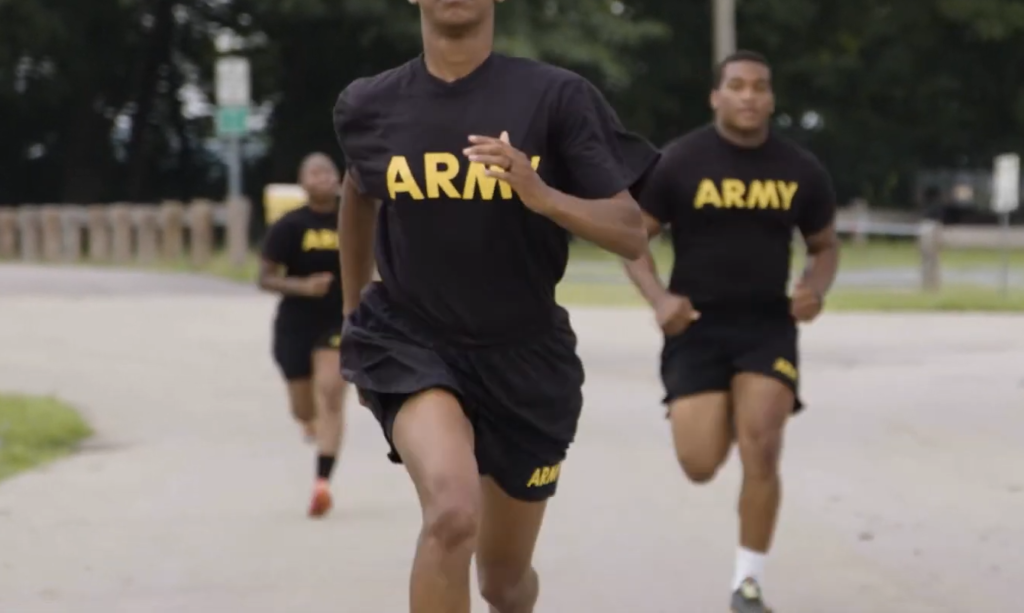
2-Mile Run Standards In 2024:
Purpose:
The 2-Mile Run is a pivotal component of the Army Combat Fitness Test (ACFT), serving as a measure of soldiers’ cardiovascular endurance and overall stamina. The purpose of this event is to assess a soldier’s ability to sustain a moderate to high level of intensity over an extended distance, reflecting the physical demands of modern military operations. The 2-Mile Run is designed to contribute to a comprehensive evaluation of a soldier’s fitness and readiness.
Equipment:
The equipment required for the 2-mile Run is minimal. Soldiers need appropriate running attire, including running shoes suitable for the terrain, and any personal accessories such as a watch to track their time. The course should be well-marked, with clear indicators for the start and finish lines. Timing equipment, such as a stopwatch or digital timer, is also essential for accurately recording the completion time for each participant.
Pre-Test:
Before participating in the 2-mile Run, soldiers should undergo a thorough warm-up routine. This warm-up should include dynamic stretches, light jogging, and other activities to prepare the muscles and joints for the physical demands of the run. It is essential for soldiers to be adequately hydrated and fueled with a balanced meal before the test. Adequate rest in the days leading up to the test is also crucial for optimal performance.
Procedure:
The 2-Mile Run follows a standardized procedure to ensure consistency in testing across all participants.
Here is an overview of the procedure:
- Starting Position: Soldiers line up at the designated starting point, ready to begin the run;
- Timing: The event begins with the start signal, and soldiers commence the 2-mile Run. Timers should accurately record the start time for each participant;
- Course Navigation: Soldiers follow the predetermined course, ensuring they adhere to the designated path. The course may include laps around a track or a mapped route;
- Pacing: Participants are encouraged to pace themselves throughout the run to optimize their performance. Consistent pacing is essential for maintaining endurance over the entire distance;
- Finish Line: Upon completing the 2 miles, soldiers cross the finish line, and timers record the finish time. The total time taken to complete the run is a crucial metric in assessing individual performance;
- Cool Down: After completing the run, soldiers engage in a cool-down routine that includes static stretches to prevent muscle stiffness and promote recovery [5];
The 2-Mile Run standards in 2023 aim to provide a fair and accurate assessment of soldiers’ aerobic fitness, contributing to the overall evaluation of their readiness for the physical demands of military service. The standardized procedure ensures consistency and reliability in the assessment process.
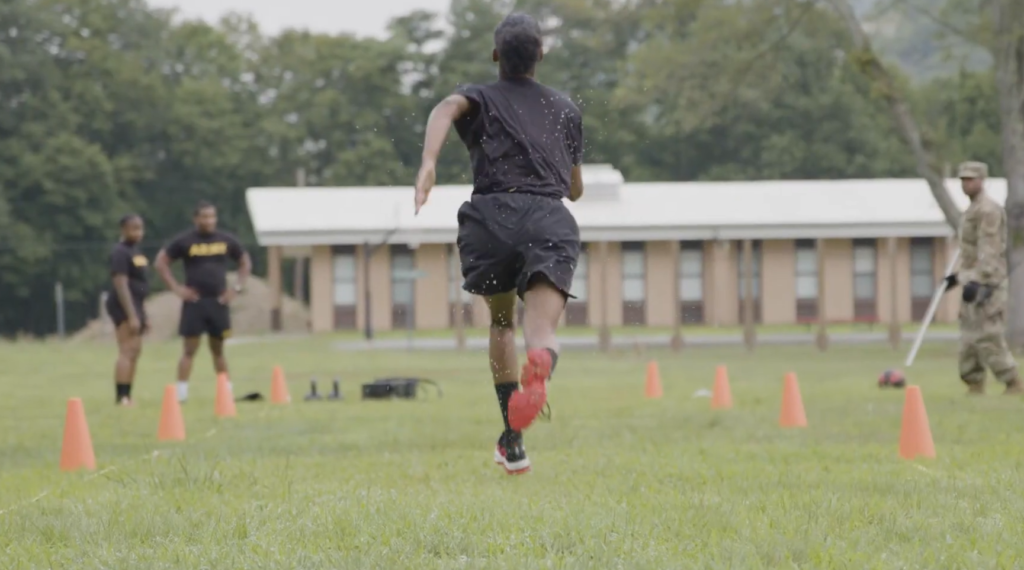
Workouts To Improve 2-Mile Run Routine:
1) Tempo Runs:
Tempo runs are an effective workout to enhance your aerobic capacity and pacing, both crucial elements for improving your 2-mile run routine. These runs involve maintaining a steady, comfortably challenging pace for an extended period, usually ranging from 20 to 40 minutes. Incorporating tempo runs into your training helps improve your lactate threshold, allowing you to sustain a faster pace for a more extended period during the 2-mile run.
Workout Tip: Start with a 10-15 minute warm-up, gradually increase your pace to the tempo range, and maintain it consistently throughout the main part of the run. Finish with a cooldown jog [6].
2) Goal Pace Intervals:
Goal pace intervals involve running shorter distances at or slightly faster than your target 2-mile pace. This workout helps your body adapt to the specific demands of the race and improves your ability to sustain a faster pace. For instance, you might run 400 meters or 800 meters at your goal pace, followed by a period of rest or easy jogging.
Workout Tip: Begin with shorter intervals and gradually increase the distance as your fitness improves. Focus on hitting or slightly surpassing your goal pace during each interval.
3) Running Progression:
Running progression workouts involve gradually increasing your pace throughout the run. This helps build mental toughness and trains your body to handle an accelerating pace over the 2-mile distance. Start at a comfortable pace and gradually pick up speed as you progress through the run.
Workout Tip: Begin with a slower-than-usual starting pace and increase your speed every half-mile. This workout not only improves your ability to handle changes in pace but also helps simulate the fatigue you may experience during the later stages of the 2-mile run.
4) Speed Development:
Speed development workouts focus on shorter, high-intensity sprints to enhance your overall running speed. Incorporating interval sprints and hill sprints into your training regimen improves your leg turnover, stride power, and cardiovascular fitness.
Workout Tip: Include 30-second to 1-minute sprint intervals with adequate rest in between. Hill sprints add an extra challenge and help build strength. Gradually increase the number of repetitions as your fitness improves.
Consistency is key when incorporating these workouts into your routine. Ensure you balance these high-intensity sessions with adequate rest and recovery to avoid overtraining. Adjust the volume and intensity of these workouts based on your current fitness level, gradually increasing the challenge as your performance improves. Combining these workouts will contribute to a well-rounded training plan, ultimately enhancing your 2-mile run routine.
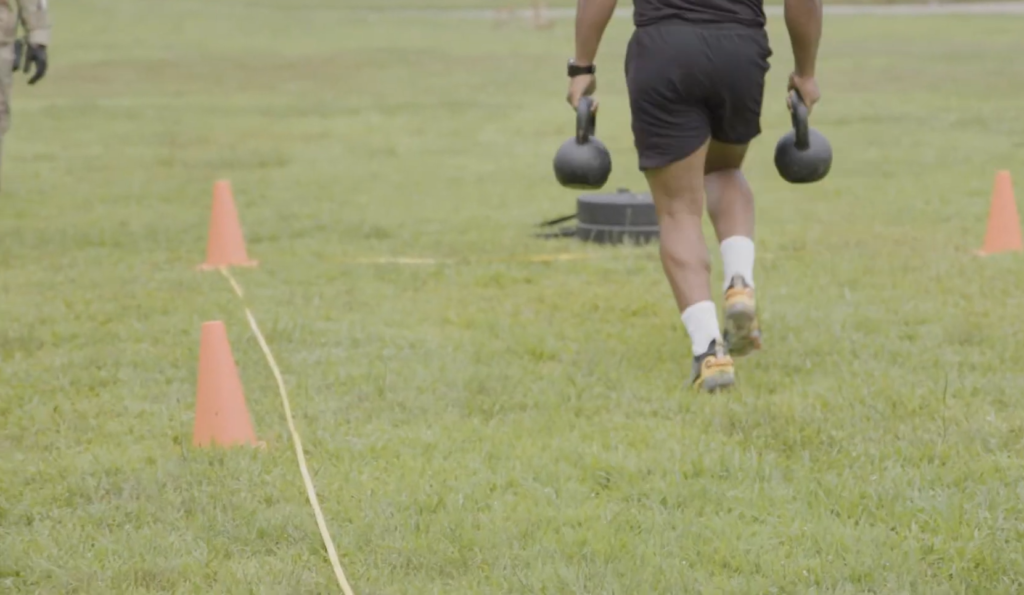
2MR Tips And Techniques For Beginners:
1) Interval Training:
Interval training is an excellent technique for beginners to build stamina and improve overall cardiovascular fitness. Incorporate a mix of running and walking intervals during your training sessions. For example, alternate between running for one minute and walking for two minutes. Gradually increase the duration of your running intervals as your fitness level improves.
Tip: Use a timer or a smartphone app to help you maintain consistent intervals. This method helps you gradually build endurance without overexerting yourself.
2) Cardiovascular Exercises:
In addition to running, include other cardiovascular exercises in your routine to enhance overall endurance. Activities such as cycling, swimming, or rowing can complement your 2-mile run training. This variety not only prevents monotony but also engages different muscle groups, contributing to improved cardiovascular health.
Tip: Aim for at least two to three sessions of non-running cardiovascular exercises per week to enhance overall fitness.
3) Strength Training:
Incorporate strength training exercises to build the muscles that support your running. Focus on exercises that target your legs, core, and upper body. Squats, lunges, planks, and push-ups are beneficial for building strength and stability.
Tip: Start with bodyweight exercises and gradually progress to using weights as your strength improves. Consistent strength training enhances overall running performance.
4) Regulating Energy During Exercise:
Managing your energy levels is crucial for a successful 2-mile run. Consume a balanced meal with a mix of carbohydrates, protein, and healthy fats a few hours before your run. Stay hydrated throughout the day and consider consuming a light snack, such as a banana or energy bar, about 30 minutes before your run.
Tip: Listen to your body and adjust your pace if you feel fatigued. It’s important to find a sustainable pace that allows you to complete the 2-mile run [7].
5) Effective Body Restoration:
Allow your body proper time to recover after training sessions. Adequate rest is essential for muscle recovery and injury prevention. Incorporate stretching and flexibility exercises into your routine to improve your range of motion and reduce the risk of injury.
Tip: Consider activities like yoga or foam rolling to enhance flexibility and aid in muscle recovery. Pay attention to any signs of fatigue or discomfort and adjust your training accordingly.
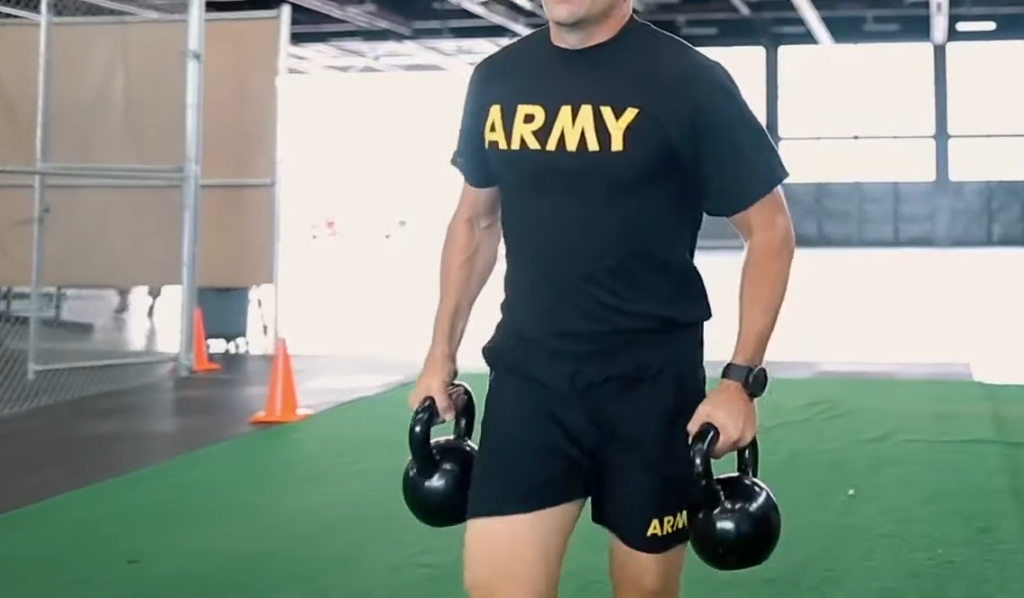
Trouble Spots On the 2MR Routine
[tds_council]Completing a 2-mile run can be physically demanding, and certain trouble spots may arise during the routine. Identifying and addressing these issues can significantly contribute to improving performance and overall comfort.[/tds_council]
Here are common trouble spots on the 2-mile run routine and tips to address them:
1. Starting Too Fast:
- Issue: Beginning the run at a pace that is too fast can lead to early fatigue and hinder overall performance;
- Tip: Start at a moderate pace that allows for a comfortable warm-up. Gradually increase your speed as your body adapts and you find your optimal pace;
2. Inadequate Warm-Up:
- Issue: Insufficient warm-up may lead to stiffness and increased risk of injury during the run;
- Tip: Incorporate dynamic stretches and light jogging before starting the 2-mile run. This prepares your muscles and joints for the physical activity ahead;
3. Poor Pacing:
- Issue: Maintaining a consistent pace is essential for endurance. Inconsistent pacing can result in premature fatigue;
- Tip: Practice pacing during training runs. Use landmarks or a running app to gauge your speed and make adjustments as needed;
4. Mental Fatigue:
- Issue: The mental aspect of running is crucial. Mental fatigue or lack of focus can negatively impact performance;
- Tip: Break down the run into smaller segments, set achievable goals, and stay positive. Engage in positive self-talk to maintain mental resilience;
5. Dehydration:
- Issue: Inadequate hydration can lead to decreased performance, fatigue, and discomfort
- Tip: Stay well-hydrated throughout the day, and consume water before and during the run. Avoid excessive caffeine or sugary drinks that may contribute to dehydration;
6. Overstriding:
- Issue: Overstriding can lead to inefficient running mechanics and increase the risk of injury;
- Tip: Focus on shorter, quicker strides. Landing your foot closer to your body’s center of mass reduces impact and promotes efficient running form;
7. Ignoring Recovery:
- Issue: Neglecting post-run recovery can result in muscle soreness and delayed recovery for subsequent workouts;
- Tip: Incorporate cool-down activities such as walking or light jogging. Stretch major muscle groups and consider post-run nutrition to aid recovery;
8. Ignoring Footwear:
- Issue: Wearing improper footwear can lead to discomfort, blisters, or other foot-related issues;
- Tip: Invest in good-quality running shoes that provide proper support and fit. Ensure they are broken in before the 2-mile run [8];
Addressing these trouble spots through proper preparation, pacing strategies, and recovery techniques can significantly enhance your overall 2-mile run experience. Consistent training, mental focus, and attention to these areas will contribute to improved performance and enjoyment of the routine.
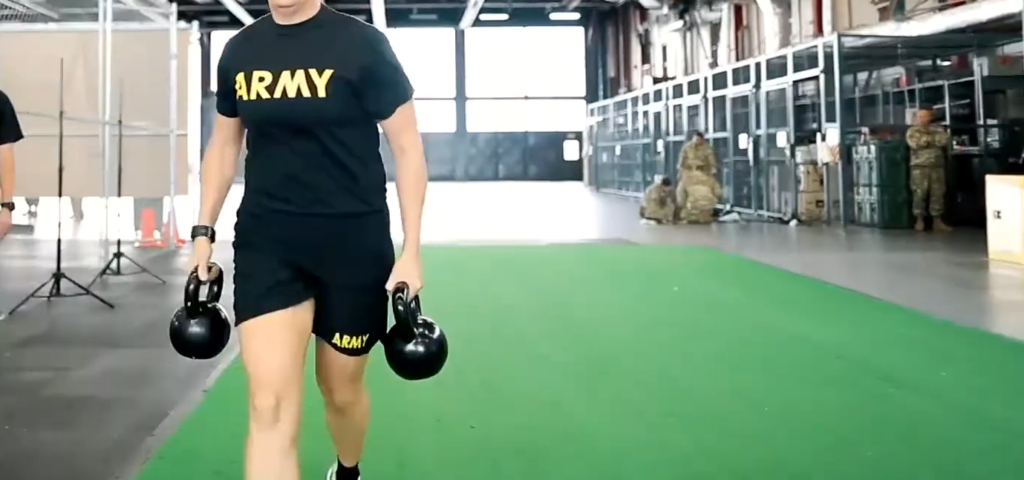
FAQ:
1. What is the ACFT regulation for 2024?
The ACFT regulation for 2024 follows the guidelines outlined in the most recent Army Field Manual (FM) and relevant Department of the Army publications. Regulations may be subject to updates, so it’s essential to refer to the latest official documents.
2. Is 490 a good ACFT score?
A score of 490 is generally considered good on the ACFT. However, individual perspectives on what constitutes a “good” score may vary. The Army sets standards for different categories, and soldiers should aim to meet or exceed these standards based on their age and gender.
3. What are the standards for ACFT setup?
The standards for ACFT setup include specific equipment requirements, layout dimensions, and safety considerations. These details are outlined in the ACFT Field Test Manual and other relevant publications provided by the Army.
4. How long is the Army’s 2-mile run?
The Army 2-mile run is a component of the ACFT, and soldiers are required to complete the 2 miles in the shortest time possible. The average completion time varies based on individual fitness levels, but the goal is to achieve the best performance within the established standards.
5. What are the 3 mandatory ACFT events?
The three mandatory ACFT events are the Deadlift, the Standing Power Throw, and the Hand-Release Push-Up. These events assess muscular strength, power, and upper-body endurance.
6. How hard is a 600 ACFT?
Achieving a score of 600 on the ACFT is considered excellent and requires a high level of physical fitness. It indicates superior performance across all six events. Soldiers should strive to meet or exceed the established standards for their age and gender.
7. Is 515 a good ACFT score?
A score of 515 on the ACFT is generally considered good. However, what is deemed a good score may vary based on individual goals and the specific standards for a soldier’s age and gender.
8. What is the passing score for the ACFT run?
The passing score for the ACFT run varies based on age and gender. Soldiers must achieve the minimum passing score for their category to meet overall ACFT requirements.
9. How far is the ACFT run?
The ACFT run consists of a 2-mile run, where soldiers aim to complete the distance in the shortest time possible.
10. Can you listen to music during ACFT?
Regulations regarding the use of personal electronic devices, including music players, during the ACFT may vary. It’s advisable to consult with unit leadership or refer to specific guidelines for the testing environment.
11. Can you take ACFT in the rain?
ACFT testing may proceed in various weather conditions, including rain. However, safety considerations are paramount, and decisions may be made by unit leadership to ensure the well-being of participants.
12. What is the hardest event in ACFT?
The perception of the hardest event in the ACFT may vary among individuals. Some may find the Leg Tuck or Sprint-Drag-Carry particularly challenging due to their demands on different aspects of physical fitness.
13. How do you prepare for the ACFT run?
To prepare for the ACFT run, incorporate a mix of interval training, tempo runs, and longer-distance runs into your training routine. Focus on improving overall cardiovascular endurance and pacing strategies.
14. How do you increase your run time in ACFT?
To increase your run time in the ACFT, gradually build up your running distance and incorporate speed training, such as interval sprints. Consistent and progressive training is key to improvement.
15. What happens if you fail the 2-mile run in the army?
If a soldier fails the 2-mile run during ACFT testing, it may impact their overall ACFT score. Unit leadership may guide remedial training, and soldiers are encouraged to work on improving their performance for subsequent tests.
16. How wide is the ACFT lane?
The width of the ACFT lane is standardized to ensure consistency across testing environments. Specific dimensions can be found in the ACFT Field Test Manual and relevant Army publications.
17. How to run correctly?
Running correctly involves maintaining good posture, a midfoot strike, and a controlled arm swing. Ensure your stride is comfortable, and avoid overstriding to prevent injuries. Proper running form contributes to efficiency and reduces fatigue.
18. How fast should a soldier run a mile?
The pace at which a soldier should run a mile varies based on individual fitness levels, age, and gender. Soldiers should aim to meet or exceed the established standards for their specific category.
Useful Video: ACFT Event 6 – 2 Mile Run
References:
- https://sfnationalguard.com/6-workouts-to-max-the-army-acft/
- https://www.dummies.com/article/academics-the-arts/study-skills-test-prep/armed-services/acft-event-two-mile-run-283793/
- https://www.nationalguard.com/basic-combat-training/army-combat-fitness-test
- https://www.up.edu/armyrotc/about-rotc/pt-information.html
- https://www.gpshumanperformance.com/tactical-training-the-acft-2-mile-run/
- https://www.armyprt.com/apft/apft-2-mile-run-standards.shtml
- https://www.bestrangercompetition.com/acft
- https://www.army-fitness.com/acrt-two-mile-run-standards/






Leave a Reply